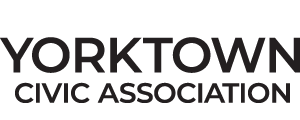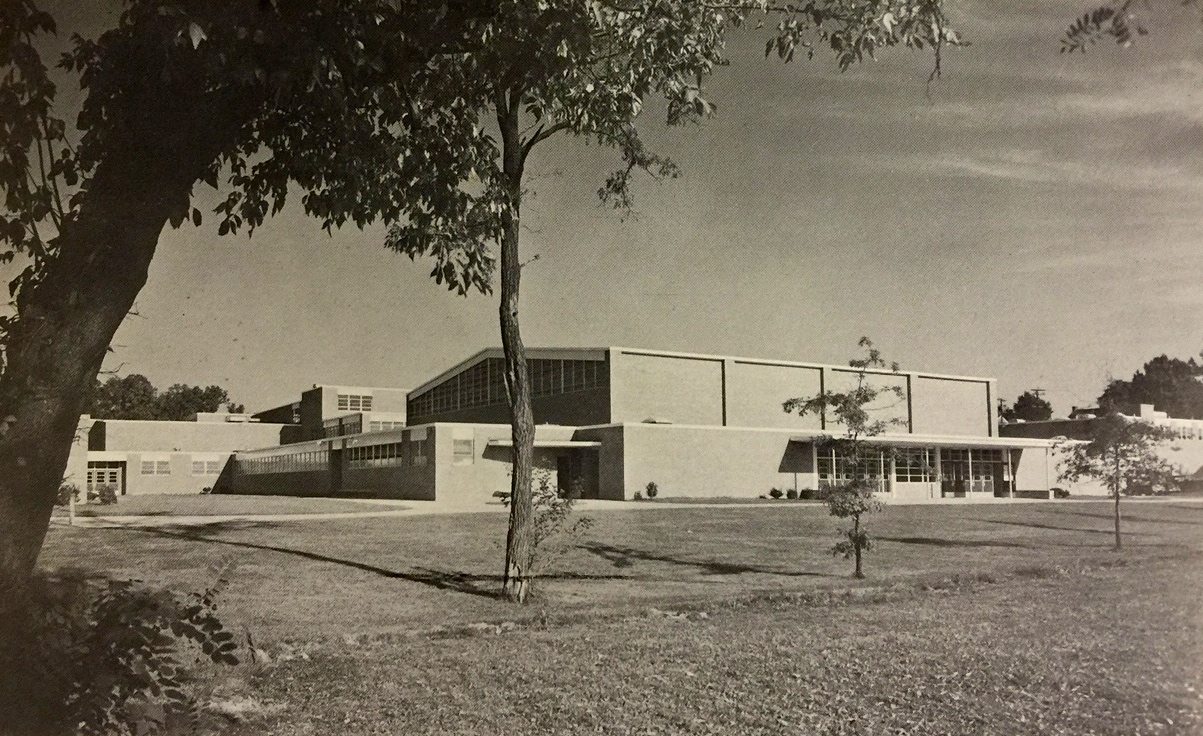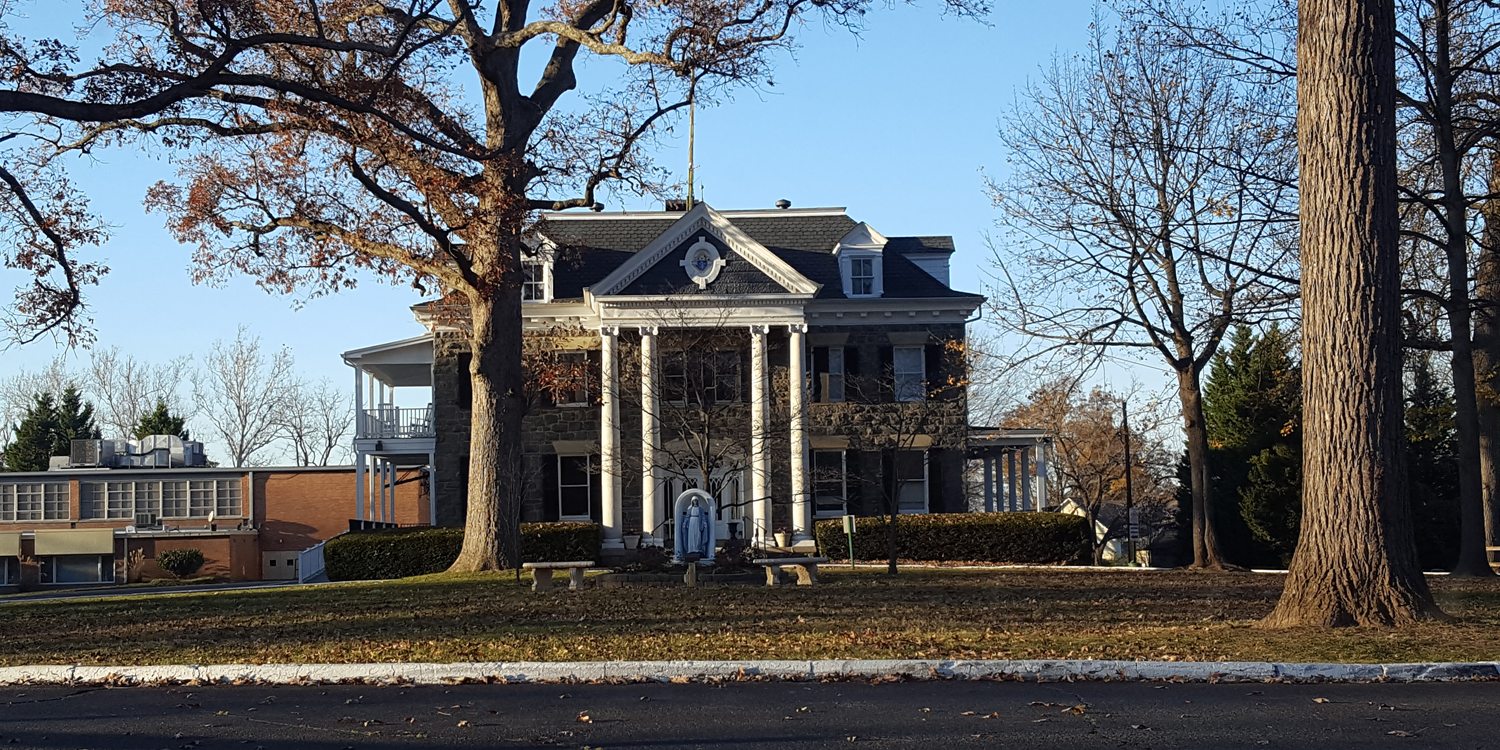History of the Yorktown Civic Association
The Yorktown Civic Association traces its history of involvement in the community and advocacy for neighborhood issues back to the time shortly after the first subdivision – Milburn Terrace – was built. The Milburn Terrace Subdivision Association was formed in 1945 for the purpose of having the subdivision builders replace faulty furnaces – an endeavor in which the association was successful. In 1946 the Millburn Terrace Association merged with the recently formed Garden City Association with Joe Camden as President. New subdivisions were being developed in the vicinity so the name “Northwest Arlington Civic Association” was adopted in 1947. The name was selected because, at that time, the area made up the main developed portion of the northwestern segment of Arlington County – the area north of Lee Highway and west of Glebe Road. This was not the case for long, as the development of the 1950s and 1960s in Arlington led to many new subdivisions, neighborhoods, and – eventually – civic associations. It was not until 1992, however, that the name was changed to the Yorktown Civic Association.
Two of the major issues which the association addressed in the 1950s and 1960s had to do with George Mason Drive. One issue was to have the County cover the open stream which flowed down the middle of George Mason from Lee Highway to the current Rock Spring Park. The Association was also active in the effort to develop Rock Spring Park and prevent George Mason Drive from being extended through the park and becoming a major thoroughfare through the neighborhood. Although association activity declined in the 1970s and 1980s a group of leaders – including Ruth Camden, Ruby Smith, and Vernon Davis – made certain that the association did not disband.
The 1990s saw a renewed level of activity by the Association under the leadership of Ted Weihe. A major accomplishment was the completion of the Yorktown Neighborhood Conservation Plan in February 1995. This was one of the first plans completed under Arlington County’s innovative Neighborhood Conservation program whereby neighborhoods are able to plan and implement local improvement for items such as parks, landscaping and streetlights. Through Neighborhood Conservation funding the YCA has successfully implemented such projects as new curbs and gutters for North Jefferson Street, traffic circles and islands, street lighting, and neighborhood signs. Neighborhood Conservation funding paid for improvements and upgrades to the Chestnut Hill tot lot as well as for the new playground equipment installed in Chestnut Hill in 1999. All of these efforts were spearheaded by the Yorktown Civic Association. All total, the Yorktown neighborhood has been the beneficiary of more than $1 million in Neighborhood Conservation funded improvements – only one of two Arlington Civic Associations to receive over one million dollars in NC funds.
In the late 1990s the Civic Association was active in the expressing community concerns during the development of the Marymount University parking garage at Yorktown Blvd and 26th St. The YCA was successful in getting Marymount to relocate the garage and to scale back the size, as well as to add landscaping and sidewalks. During this time the YCA began involvement with infill development issues – an issue that has grown in importance as more and more of the larger lots in the Yorktown neighborhood are acquired for multi-home development.
Under the leadership of Sandi Berenbaum (President 1998 – 2002) the Civic Association was actively involved in the issue of the development of a master plan to renovate Greenbrier Park (which also serves as the athletic fields for adjacent Yorktown High School) and Chestnut Hill Park (site of the Tot Lot and Playground). The YCA actively opposed the County’s initial proposal to demolish up to 12 nearby residences to expand the two parks and urged the County’s Department of Parks, Recreation and Community Resources to work directly with the Arlington County School staff to jointly work on the master plan for Greenbrier Park and the plan for Yorktown High School addition and renovation together.
The Civic Association also advocated that the county and Virginia Department of Transportation (VDOT) undertake steps to redesign and improve the dangerous intersections along Lee Highway at George Mason Drive and at Harrison St.
For the past several years the Yorktown Civic Association has sponsored our own local Neighborhood Day (usually held the second Saturday in May) celebration with a community day in Chestnut Hill Park with free balloons, refreshments, and entertainment.
Newsletter “Civic Pride”
The association’s history has been chronicled in its newsletter, “Civic Pride,” published continuously for over 49 years. The most recent years of our Newsletters are available in PDF format.
History of the Yorktown Area
The groundwork for the establishment of the Yorktown Civic Association was first laid in the year 1649 when the exiled King Charles II granted 5,282,000 acres of land in Virginia to Thomas, Lord Culpepper, a charter which was confirmed after the Restoration. When Culpepper died in 1689, five-sixths of the property was inherited by his daughter Catherine. In 1690, Catherine married Thomas, 5th Lord Fairfax. In 1724 Fairfax sold 662 acres to James Robertson, and it appears that most, if not all, of the civic association was in this tract. Robertson, like most of the original owners, was an absentee landowner. Settlement was sparse with tenants and yeomen farming small tracts.
Little Falls Road was originally a trail from the Indian villages at the head of Four Mile Run to the Potomac River fisheries just below the Little Falls. Later it was developed as a wagon road from the settlement at the Falls Church to Thomas Lee’s landing and warehouse at the mouth of Pimmit Run (near George Mason & Old Dominion Drives). The impressive stone mansion at 5115 Little Falls Road (presently, the Knights of Columbus) is built on what is believed to be the site of an Indian village and burial ground. Numerous artifacts have been found in the vicinity. The original house was built in 1855 by Gilbert Vandenberg (also Vandenbergh), who traveled to Virginia from Wisconsin to visit his brother and sister and decided to stay. During the Civil War, the Vandenbergs named the homestead “Reserve Hill” because of the Union Army Reserve Units stationed at nearby Minor’s Hill (near current day Williamsburg and Powhatan).
Mrs. Vandenberg took in a few select boarders, one of whom was George Nicholas Saegmuller (1847-1934), a native of Germany, who came to America in 1870 at the age of 23. In 1874, Saegmuller married her daughter, Maria Jane. They remained at the homestead after their marriage, and in the 1880s, Saegmuller purchased his father-in-law’s 150 acre farm, as well as adjoining land to enlarge it. Saegmuller was a scientist, manufacturer, farmer and civic-minded citizen. Saegmuller was a brilliant inventor and secured 39 patents for his inventions in optical instruments during his career. He was, however, unsuccessful in making Reserve Hill a selfsustaining farm.
In the 1890s, George Saegmuller was elected to the Board of Supervisors and later became its chairman. He found the County finances were depleted, and that often the County paid premium prices for work, because the contractors knew they would have to wait for their pay. He determined from the Treasurer, Mr. Wibirt, how much money was required to make all accounts current. He then went to the National Bank of Alexandria and gave his personal note to restore the county’s credit. He also personally financed the construction of what is now the James Madison School.
His efforts were key in the planning and construction of the new Alexandria County courthouse in 1898 on the site of the present Arlington County courthouse complex. After the frame house burned in 1892, Saegmuller built a large stone residence with a two-story portico and a stone water tower which is an exact replica of a gate tower of the Nürnberg city wall. The Knights of Columbus purchased the homestead in 1950 to serve as their meeting hall and headquarters.


